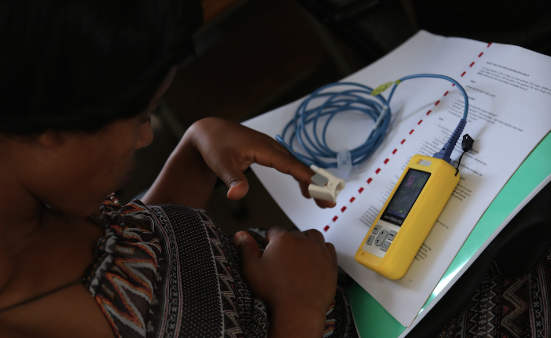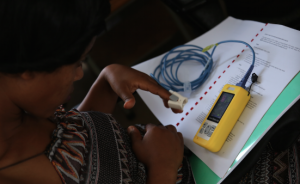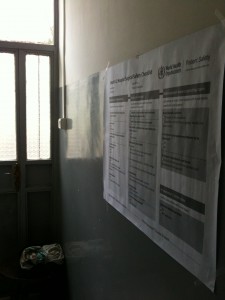
Steps to Safer Surgery
Last summer in Ethiopia we launched our second step towards safer surgery worldwide: Clean Cut, a pilot programme funded by GE Foundation, targeting surgical site infection.
Of course, that doesn’t mean our first step is done and dusted.
We’ve got a long way to go towards closing the global pulse oximetry gap as part of our Safe Anaesthesia programme. Tens of thousands of Operating Rooms still lack access to a pulse oximeter, forcing patients and providers to risk devastating consequences. As access to surgery expands, it’s a race to ensure that safety keeps meaningful pace.
But this week we’re widening the footprint!
Following a workshop in Hawassa last year, Lifebox is headed to Addis Ababa, to make good on the second phase of our Flatley Foundation-funded mandate: oximeters and training for every government hospital in Ethiopia.
 We’ve been working with some incredible colleagues at Addis Ababa University (AAU) and Tikur Anbessa (Black Lion) Specialised Hospital to plan a three-day training programme for residents, faculty and staff, as well as visiting anaesthesia providers across the region.
We’ve been working with some incredible colleagues at Addis Ababa University (AAU) and Tikur Anbessa (Black Lion) Specialised Hospital to plan a three-day training programme for residents, faculty and staff, as well as visiting anaesthesia providers across the region.
We’re expecting 140 delegates at the Lifebox safe anaesthesia workshop – a dynamic mix of physiology, clinical scenarios, and basic maintenance of a pulse oximeter. That last one’s important because each attendee will leave with a Lifebox monitor.

A train the trainers section of the workshop will help ensure that the information, communication and leadership so crucial to tackling complexities of unsafe surgery, continue to spread beyond the walls of AAU.
 Although Safe Anaesthesia and Clean Cut are separate technical programmes, it’s no coincidence that the leadership and content are deeply complementary: they’re both rooted in the WHO Surgical Safety Checklist.
Although Safe Anaesthesia and Clean Cut are separate technical programmes, it’s no coincidence that the leadership and content are deeply complementary: they’re both rooted in the WHO Surgical Safety Checklist.
Adapted and sustainable use of this 19-step framework for reducing complications and mortality by more than 40% is fundamental to the Lifebox goal of safer surgery worldwide.
As such, we’re also working this week with nurses and surgeons from Tikur Anbessa to support long-term implementation at the hospital.
19 steps might sound like a lot of steps to learn, especially when we’ve only taken a few together so far. But the Checklist is really more of a shared choreography than a lonely plod, as soon as teams get the hang of it.
And one thing’s for sure (and you can always tell) – we really like our dance partners.

